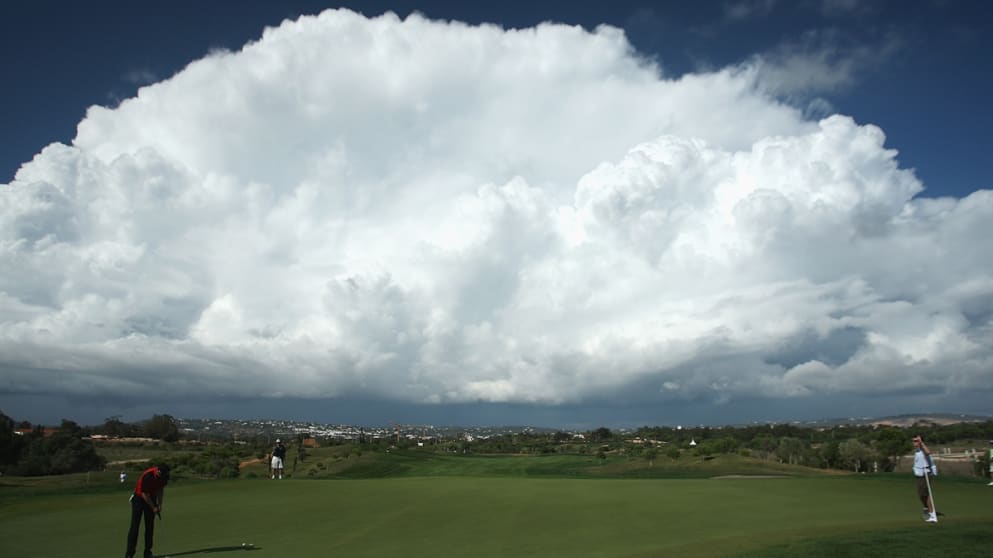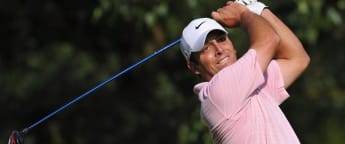Ahead of this week’s Portugal Masters, europeantour.com checks out what players can expect from the host venue, the Oceânico Victoria Golf Course in Vilamoura, Portugal.

Overview
Opened in 2004, the Oceânico Victoria Golf Course was designed by American golfing legend and seven-time Major winner Arnold Palmer at a cost of €18million and with an aim of being one of the finest golf complexes in Europe, and it is certainly up there with the best.
Playing at 7,231 yards from the championship tees, the par 72 design hosted the World Cup the year following its inauguration and has, since the first playing of the event in 2007, accommodated the Portugal Masters and its four previous winners, Steve Webster, Alvaro Quiros, Lee Westwood and Richard Green.
Comprising four par fives, four par threes and ten par fours – including the beastly 510-yard seventh and the incredibly challenging 463-yard 18th – officials have the choice of numerous tees with which to vary individual holes throughout the tournament days.
There are four lakes at Oceânico Victoria, covering a total of 13 of the course’s 90 hectares, and the watery hazards come into play on seven holes: the aforementioned seventh, the 11th, 12th, 13th, 14th, 17th and 18th.
Martin Kaymer, the highest-ranked player on show this week, is the current holder of the course record having fired an incredible 11 under par 61 in the opening round of the first Portugal Masters back in 2007, a magnificent effort that consisted of 11 birdies including five in a row to finish.
The course is in superb condition and with a forecast befitting of Portugal’s glorious reputation, with temperatures peaking in the late 20s and a testing breeze that should top out at around 15 mph, the stage is set for another memorable week in Vilamoura.
Fairways
The fairways at the Oceânico Victoria are generally fairly wide and receptive for the highly-skilled professional golfer, but with water coming into play on almost half the holes and an abundance of fairway bunkers ready to capitalise on errant drives, accuracy from the tee is imperative.
There are doglegs left at the fourth, fifth and seventh holes that may encourage the draw, but above all players will be mainly searching for arrow-straight tee shots, with sometimes an iron providing the best chance of ideal positioning.
Tournament Director, David Williams, said: “The fairways will be in very good condition, and although not particularly tight it will be more important to ensure hitting them with the rough a bit more penal this year.
“There is now more definition to the rough, which has been extended by around 20 yards so wayward tee shots will be punished.”
Greens
The greens are one area of the course that have received some attention since last year’s event, as Williams also reflected.
He said: “There has been a lot of work done on the course in general, especially on the greens, as in previous years they have been a little too soft and receptive, leading to some very low scoring, but they have been firmed up considerably and so will therefore play a lot harder.
“This has also increased the importance of hitting as many fairways as possible to have a chance at landing the ball softly on the greens.”
Generally large and undulating, and currently running at around 11’5” on the stimpmeter, the greens are L93 Bentgrass and should provide a telling test for even the most accomplished of the Tour’s putters on view this week.
With broad fairways and non to punishing rough, a good putting week could prove the difference between first and second come Sunday.
Key holes
The par five 17th is widely regarded as the “signature hole” of the Oceânico Victoria course, proclaimed by the Oceânico group’s website as an “Arnold Palmer masterpiece”.
Playing at 589 yards from the back tees, it is the longest par five on the course and is flanked down the right hand side by 12 water cascades and several fairway bunkers. After the tee shot things don’t get any easier either, with those brave enough to attempt the green in two facing a daunting approach to the water-fronted green that also happens to be the smallest on the course. A thorough and visually stunning examination of skill and course management.
And while the 17th is described as a thing of beauty, defending champion, Australian Richard Green, believes the longest holes on the course are there for the taking.
“I think the par fives are the key here to having a great score,” he said. “On the final day [last year] I remember birdieing three of the four par fives which helped me greatly and I was eight under par for the week on them which was almost half of my 18 under par winning total. So you can see how important they can be.
“Of the other holes, I think the one that stands out is the seventh,” Green continued. “It is a really difficult par four at over 500 yards and although, if you play it well you do have a chance for birdie, you can also make some big numbers there if you are not careful. I was level par on that hole for the four rounds last year and I’d take that again this week, no question.”
How the course played in 2010
In the 2010 Portugal Masters there were, in total, 44 eagles and an astonishing 1610 birdies, figures that are indicative of the scoring possibilities available at Oceânico Victoria.
Only 20 of those 1610 birdies, however, came at the par four 18th, ranked the hardest hole at last year’s event.
A 463-yard monster bordered the entire length by water on the left, and with plentiful fairway-bunkers littering the right side of the fairway, the finishing hole also normally plays into the Vilamoura wind. Undoubtedly a potential round-wrecker, as shown last year, when there were 108 bogeys and 42 double bogeys posted on it, so players will be more than happy to make par on it this week.
“The 18th is a really good hole for the tournament to finish on,” said 2010 champion Green. “It’s not quite as long as the seventh, but it is still a long and demanding par four. The drive is key there to get into position but even if you do, you still face a tough second shot where you have to be careful of the water.”
At the contrasting end of the spectrum, ranked 18th in the 2010 hole averages with 14 eagles and 172 birdies to its name, and only 24 scores over par on it all week, is the par five fifth which emerged from last year with a 4.53 shot average that will leave this week’s competitors licking their lips. Par on this hole will feel more like a bogey and will indisputably represent an opportunity missed.
As Green mentioned, low scoring on the par fives is imperative for those looking to trouble the upper echelons of the leaderboard, with almost 40% of 2010’s eagles and birdies being yielded at the long third, fifth, 12th and 17th holes.
Conclusions
Despite the firming up of the greens and the extending of the rough the scoring should still be good this week in Portugal, with previous years’ winning totals numbering -18 (Green in 2010), -23 (Westwood in 2009), -19 (Quiros in 2008) and -25 (Webster in 2007).
Accuracy off the tee and good putting on the undulating greens should go well rewarded, while players will also have to contend with Vilamoura’s perpetual gusts, as Williams summarises.
“I think one of Oceânico Victoria’s challenges is its almost-constant breeze,” he said. “It’s not a gale, perhaps around 10 to 15 mph wind, so not calm, but not too windy either. But it always provides a nice challenge, and combined with firmer greens it should prove a test for this week’s world-class field.”
For a concise run-down of the venue information,Click Here.






